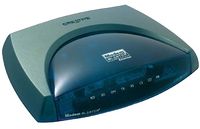Speed of Broadband
Description
Technically, speed of broadband is measured in terms of data per second. Nevertheless, from a user perspective, the speed of broadband is the speed at which they are able to download critical information, such as e-mails, movies or music files.
Enablers
- Improvement data carriage medium: cable & wireless
- Improvement compressing technologies
- Growth of the new economy (dot.com industries + shift of existing industry to online services)
- Growth of VOIP and further shifts in communication methods from tradtional to digital (i.e. fax replaced by e-mail, TV replaced by WEBTV)
- Growth of online industry platforms
- Mobility: increase usage of broadband functions outside of home/office
- Improvement of QoS technologies
Inhibitors
- Mobility: increase ad-hoc and basic usage
- 2nd Dot.com crash
- Cost of marginal efficiency
- Switching cost for users
- Exit Barriers (inhibits Telecom industry to switch from one technology to the other)
- Real world limitation (output becomes slower than throughput)
- Hardware bottleneck: the ethernet hub capacity
Paradigms
As we spend more time on line and people have more access to computers, we change in the way we tolerate (download) delays and we expect instant access to information.
Because of the populatiry of file sharing and shared archives, there is a change in the perception of ownership of files (why downloading/ saving when you can access infomation any time).
Experts
IEEE- standard development
Telecom companies
FLAG- (Connection of countries to)
Vint Gray Cerf
Cisco
Timing
- 1940 : First data transfer between two electronic devices
- 1962 : ARPANet, first proper network. 50 kbit/s
- 1988 : DSL Project starts, using unused frequencies on a copper phone line (Theoretical limit of 8Mb/s for ADSL, 24Mb/s for ADSL2+)
- 1990 : Cable Internet reaches high popularity (Generally around 16 KB/s - 512 KB/s)
- 1996 : Commercial fiberoptic cables for infrastructure
- 1998 : 56K modems and dial-up become widely used
- 2000 : Users converti to Cable Internet and ADSL, getting the first step on broadband
- 2003 : Personal Wireless LAN's become a commodity
Web Resources
http://www.wtop.com/index.php?nid=108&sid=805001&sidelines=1
